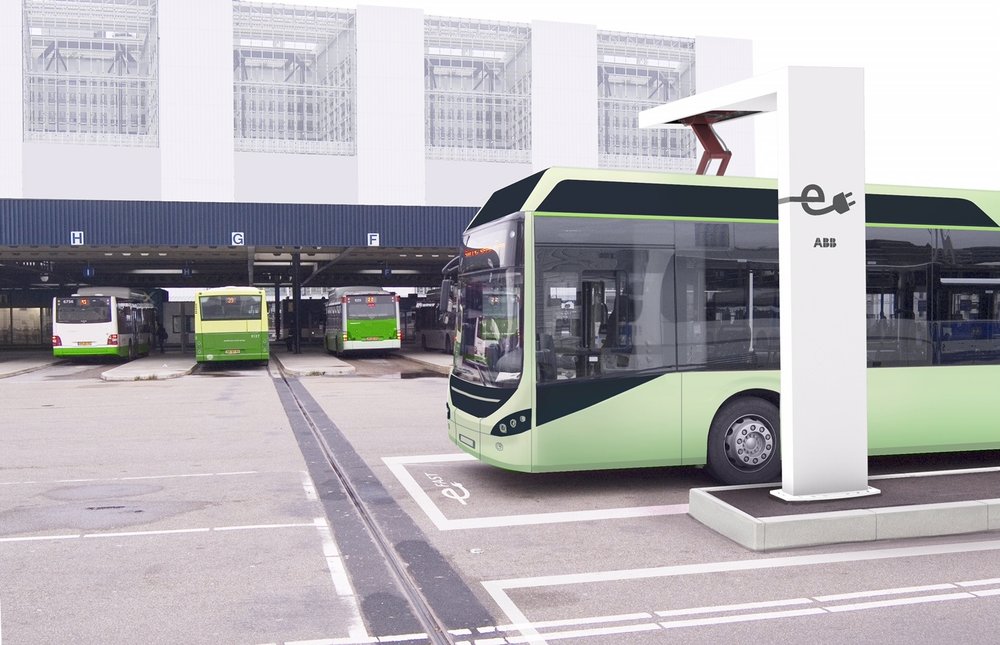www.magazine-industry-usa.com
11
'18
Written on Modified on
eBus: What to consider when you’re considering going electric
While electric buses cost about $300,000 more than a diesel equivalent, annual savings of about $39,000 are gained over the 12-year lifetime of the bus

When health impacts (i.e., reduced respiratory problems from improved air quality) are considered, “the resulting health benefit… from the reduction of respiratory and other diseases is estimated at $150k per bus based on EPA data.” That puts the overall lifecycle cost for diesel at $2.5m compared to $1.1m for electric.
King County, Washington, where Seattle is located, conducted a similar study on the prospect of converting to an all-electric fleet and found “the societal costs from GHG and air pollutant emissions and noise are three times higher for a diesel-hybrid fleet than for a zero-emission fleet powered by renewable energy.”
The New York and Washington studies did not attempt to account for carbon emissions avoidance, but obviously putting a price on carbon would enhance the eBus business case even more. But as noted in the MTA/Columbia report, the financials favor electric drive even without accounting for public health.
So, what’s not to love about the eBus?
In the long run, probably nothing, but it’s the transition that’s the trick. For starters, eBuses are still an emerging technology. The National Renewable Energy Laboratory gives eBus a 7 out of 9 on the “technology readiness level,” indicating it is being validated at full scale in a “relevant environment.” By comparison, diesel receives a TRL of 9 as a mature technology. However, the eBus has a little further to go before it’s considered to be fully commercialized.
There are a few important hurdles to overcome, perhaps the most critical of which is the issue of charging standards. Currently, there are two main ones for EVs, but bus and charger manufacturers also offer a variety of designs, some of which are proprietary. The industry is however currently working to agree on and create these standards.
In the meantime, there are other challenges faced by transit operators looking to go electric. Operational issues related to charging, complexities in operating a mixed fleet, resiliency during blackouts, and even real estate costs all weigh on the minds of would-be eBus operators.
From a charging standpoint, there are a few inter-related issues at work. First, there is a tradeoff between the capacity of the onboard battery, charging time and range. Any given transit system will have multiple options to achieve a desired level of service based on some combination of these. It’s just a question of optimizing how the pieces fit together.
High-power charging, though, is clearly the way of the future as it delivers more range in a shorter time. So, it’s advisable to plan for high-power infrastructure. For example, at present it’s difficult to retrofit a bus for overhead fast charging if the vehicle was not built with it. However, the cost per vehicle is negligible, so absent a compelling argument for opting out, it’s good practice to buy overhead-capable buses in order to take advantage of opportunity charging.
Similarly, scalability is vital as bus networks transition from pilot programs to fully electrified fleets. Charging systems using a modular design offer an easy way to increase charging capability by simply adding cabinets.
Efficient deployment of fast charging depends on the identification of charging locations that can be served by multiple routes and can charge multiple buses at the same time. It’s also good practice to distribute charging infrastructure to accommodate backup power, eliminate bottlenecks and reduce costs. (Don’t underestimate the impact that utility demand charges can have on operating costs.) That might include energy storage, which can help to reduce peak demand and ease the integration of bus charging with the surrounding grid.
All of this good advice is in line with paying closer attention to total cost of ownership rather than to up-front capital costs. That is really the core of the eBus business case, and it extends from the bus itself to the charging infrastructure that supports it.
new.abb.com/us

